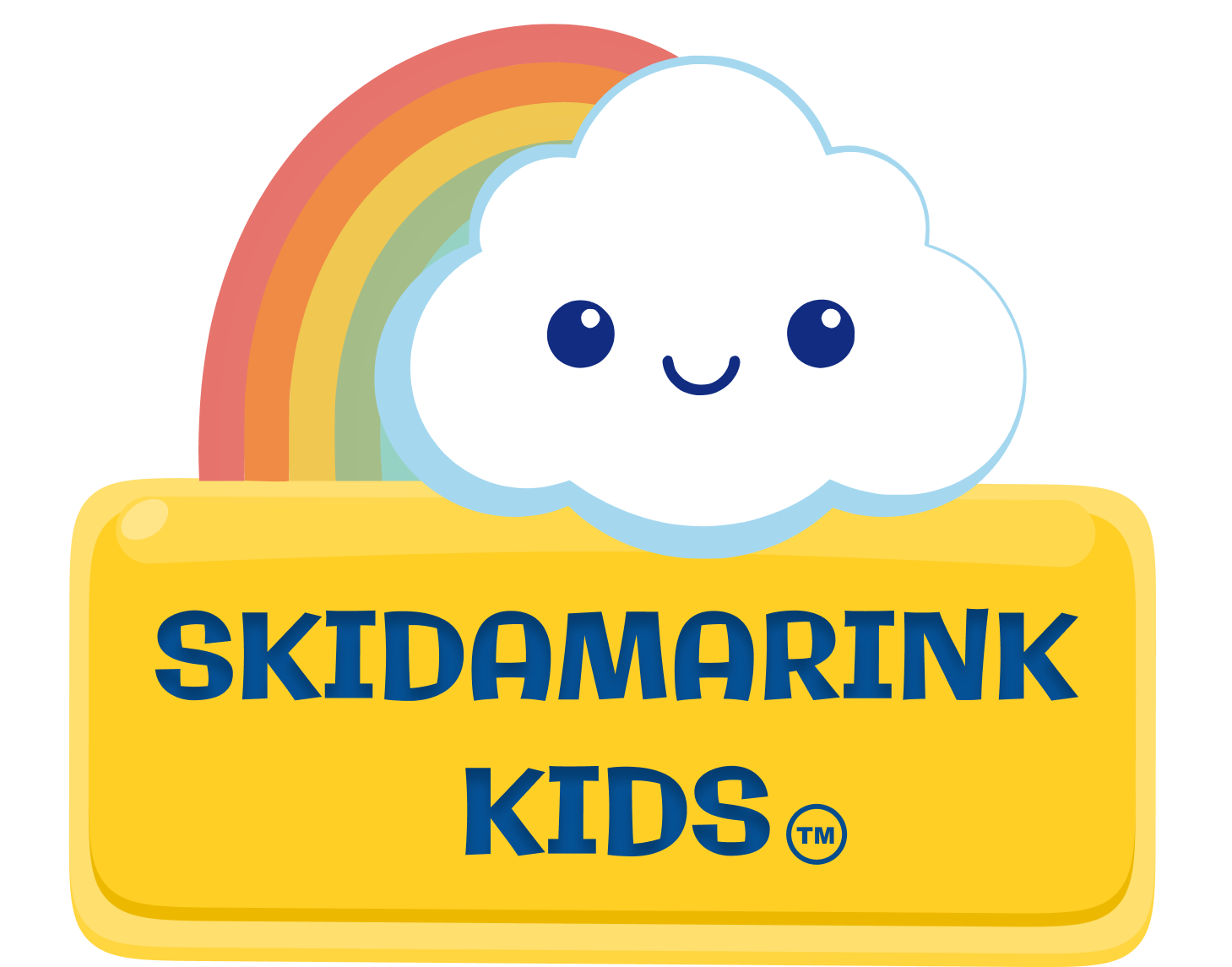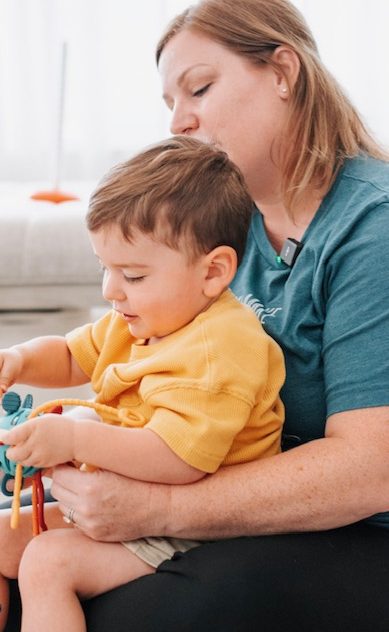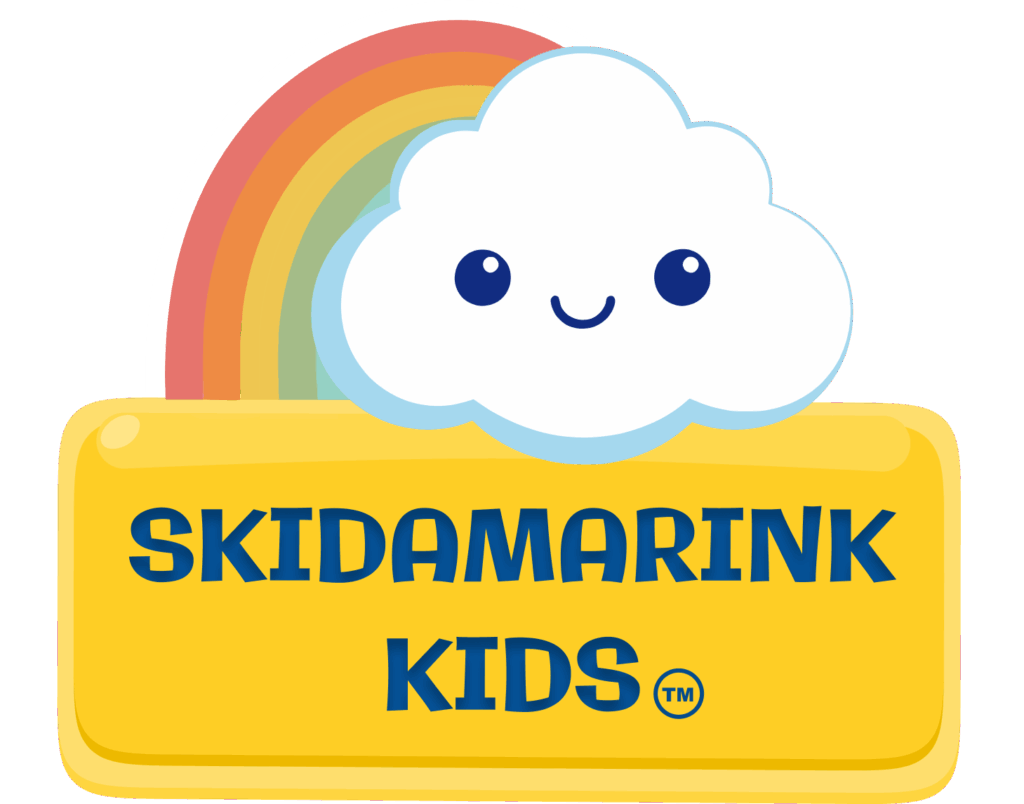Learning how to handle tantrums effectively isn’t about stopping the meltdown immediately. It’s about supporting your child through their emotional storm while maintaining your own calm presence.
As parents, we’ve all been there. The sudden meltdown in the grocery store, at a playdate, or right at home. Tantrums can be overwhelming and sometimes embarrassing. Yet these moments aren’t signs that your child is a “bad child”. They’re your child’s developing brain learning to process big emotions they don’t yet have the skills to manage.
Understanding Your Child's Brain During Tantrums
When a child has a tantrum, their brain enters “fight, flight, or freeze” mode. The part of the brain responsible for survival reflexes takes over while the logical, reasoning part essentially shuts down.
What happens in your child’s brain:
- The primitive survival part takes control
- Logical thinking becomes impossible
- Stress hormones flood their nervous system
- Their body believes they’re in actual danger
This fight, flight, or freeze state requires a specific response from you. Your goal is helping your child’s nervous system shift into what’s called “rest and digest” state. Only when their brain calms can they begin to think logically and choose different behaviors. Before you can teach, guide, or set boundaries, you must first help them feel safe.
Why Do Toddlers Have Tantrums? Understanding Your Child’s Normal Development explains more about the developmental reasons behind these intense emotional responses.
What Makes Tantrums Worse (And What to Do Instead)
Before we dive into effective strategies, let’s talk about responses that actually intensify meltdowns. These well-meaning approaches backfire because they increase fear or shame when your child’s nervous system is already overwhelmed.
Responses that escalate tantrums:
- Threats of punishment: “If you don’t stop, you’re getting a timeout!” increases distress
- Ultimatums: “Keep this up and we’re leaving!” creates more fear
- Shaming language: “You’re being bad” or “Big kids don’t act like this” triggers rejection
- Rushing them: “Calm down right now!” creates pressure their body can’t meet
- Time outs: Isolation often makes things worse for children who can’t self-regulate yet
My own daughter’s meltdowns escalated when we tried time outs. She didn’t know how to get herself out of that stress state and separating her only increased her panic. She needed my calm presence, not isolation. I wish I had known that when she was little.
Instead, focus on responses that help your child feel safe. Your calm, patient presence is what allows their nervous system to shift from survival mode to regulation.
Your Response Sets the Tone: Start With Your Own Calm
The most crucial aspect of how to handle tantrums starts with regulating yourself first. Your child’s developing brain co-regulates through your emotional state. They literally borrow your calm when they can’t access their own.
Learning how to handle tantrums effectively begins with this understanding: you set the emotional tone.
Regulate yourself first:
- Take three deep breaths before reacting
- Speak softly and slowly using a low tone to trigger calming
- Soften your posture and face – relax shoulders, get down on their level
- For faith based parents– the power of focusing on Gods goodness, that he is trustworthy or speaking the name of Jesus can usher in peace
- Remember: Your body language communicates as much as your words
Creating Safety: The Foundation for How to Handle Tantrums
Once you’ve regulated yourself, focus on creating an environment where your child’s nervous system can begin to relax.
Reduce sensory overwhelm:
- Lower noise levels and dim bright lights
- Remove scratchy or uncomfortable clothing
- Offer a quiet space for processing emotions
Many tantrums are intensified by sensory input that a stressed nervous system can’t filter. Signs of Sensory Issues in Toddlers: Causes, Behaviors, and Strategies for Support can help you identify if sensory processing plays a role.
Create a calm corner or peaceful spot where you can sit with your child as they work through their feelings. This isn’t a time out or isolation. It’s a supportive space where your presence says “I’m here, you’re safe, and I’m not afraid of your big feelings.” Calm Down Corner for Kids: Create a Self-Regulation Space offers practical guidance for setting this up.
Stay present without pressure. You don’t need to talk, lecture, or explain anything during the storm. Simply being there provides the secure base their nervous system needs to regulate.
Physical Comfort Strategies
Physical touch can be incredibly calming when your child is receptive to it. Always follow your child’s cues, as some children find touch overwhelming during meltdowns.
If your child welcomes physical comfort:
- Deep pressure hugs provide security and help organize the nervous system
- Gentle massage on arms, back, or hands with slow, steady strokes
- Blanket “burrito wrap” for calming deep pressure (always leave face clear)
- Favorite comfort items like stuffed animals or special blankets

Some children need space rather than touch when overwhelmed. If your child pushes you away or seems more agitated with physical contact, respect that. You can still provide a calm presence nearby without touching them.
Communication Strategies for Calming Children During Tantrums
How you communicate during tantrums matters. Your words should be simple, clear, and focused on validation.
Keep it simple:
- Use brief phrases: “I see you’re upset” or “This is hard”
- Validate feelings: “You’re so frustrated right now” or “You really wanted that toy”
- Tell them what TO do: “Hands down” instead of “Don’t hit”
- Wait to discuss what happened until they’re completely calm
Long explanations won’t work when their logical brain is offline. Validation doesn’t mean agreeing with their demands. It means acknowledging their emotional experience is real. Teaching moments need a regulated nervous system to be effective.
Turn deep breathing into playtime! Our interactive breathing animations in the Tantrum Tamer App make calming down fun. Your child will love helping the grumpy dragon breathe his way to happy. When self-regulation feels like a game, cooperation comes so much easier.
What If You Always Had the Right Words?
When your child melts down, do you forget what to say? Tantrum Tamer’s voice prompts deliver the perfect phrases at the perfect time—in voices your child will actually listen to. Kids respond better when it’s not Mom or Dad asking, and you can even make custom phrases to transform your daily battles into fun moments.
Pair it with our Kid Koins reward system where children earn points for cooperation and shop for meaningful rewards (park trips, extra bedtime stories, special privileges—no spending required!).
Download Tantrum Tamer turn challenging moments into wins.
In-the-Moment Strategies for Responding to Child Meltdowns
These in-the-moment techniques for how to handle tantrums help your child’s brain shift from fight, flight, or freeze mode into the rest and digest state where regulation becomes possible.
Effective calming techniques:
- Allow quiet processing time without pressure – your silent, patient presence provides safety while they work through emotions (this works like magic for many children)
- Start a calming activity they enjoy without requiring them to join – begin drawing, reading aloud, or playing in sensory bin. Often they’ll be distracted by wanting a turn which will help their nervous system settle
- Try something or say something silly – a funny face or playful movement can interrupt the spiral. Laughter can disarm fear and gets the brain out of the survival mode
- Redirect attention once they show signs of calming – offer a choice between two activities when they move from screaming to quieter crying
- Maintain boundaries during tantrums – co-regulation doesn’t mean giving in to unreasonable demands or gets them out of manageable request you made
How to Calm Child Naturally: Brain-Supporting Activities provides more strategies you can use both during and between meltdowns to support your child’s developing regulation abilities.
After the Storm: Building Skills and Connection
Once your child has calmed completely, you have opportunities to strengthen skills and connection.
After they’re calm:
- Help them return to their previous activity – this teaches that emotions pass and life continues
- Offer simple choices to rebuild their sense of control – “Would you like apple slices or cheese?”
- Acknowledge the moment briefly – “You were really frustrated. I stayed right with you until you felt better”
- Save teaching for later – wait until well after they’re calm for brief, age-appropriate conversations about feelings and better choices
How to Handle Tantrums in Public Spaces
Tantrums in public add the challenge of feeling observed and judged, but the strategies remain the same. Find a quiet space if possible, keep comfort items in your bag, and remember that most parents have been exactly where you are. Focus on helping your child regulate rather than managing onlookers.
For comprehensive guidance on navigating meltdowns during outings, including specific strategies for stores, restaurants, and other public places, see our complete guide on managing tantrums in public.
Building Long-Term Success: The Bigger Picture of How to Handle Tantrums
Understanding triggers and learning how to handle tantrums with patience and brain-based strategies helps your child feel safe, calm, and understood. Your response plays a key role in helping them learn self-regulation skills that will serve them for life.
Focus on the long game:
- Regulate yourself first – you can’t pour from an empty cup
- Model the regulation you want to see – your calm teaches more than words
- Help them experience returning to calm repeatedly – this builds neural pathways
- Focus even brief times they pause and think before responding- Impulse control and self regulation requires higher levels of brain growth. Give examples and positive attention to foster learning these skills. “You put your hand up to hit, yet you stopped yourself. That is acting like a self control hero” instead of “I can’t believe you almost hit your sister”.
- Remember progress isn’t linear – they may handle things beautifully one day and fall apart the next
Child Self Regulation: The Brain Balance Key to Success explores this critical developmental process in depth, while Everyday Self Regulation Activities: Build Skills Daily offers simple ways to strengthen regulation skills between meltdowns.
Modern Life and Self-Regulation Challenges
Today’s children face unique challenges that make learning self-regulation harder. Many don’t get enough movement-based play and sensory experiences their developing brains need. Modern childhood often involves more screen time and structured activities than the free play and outdoor exploration children require for proper nervous system development.
Child Behavior Problems: How Modern Play is Failing Kids examines how these environmental changes impact regulation abilities. What looks like “bad behavior” or frequent tantrums may actually be a nervous system crying out for the experiences it needs to develop properly.
The Gift You're Giving
By learning how to handle tantrums with calm, brain-based strategies, you’re teaching your child that emotions are safe, that they have a secure person to help them through hard moments, and that they can return to calm even when feelings feel huge.
Every tantrum you navigate with patience strengthens your connection. Co-regulation comes before self-regulation. The regulation skills they’ll use as teenagers and adults are being built right now through your calm presence during their storms.
Moving Forward With Confidence
Mastering how to handle tantrums takes practice for both you and your child. Be patient with the process. Celebrate the moments when you stay calm even if your child doesn’t. Notice when tantrums are shorter or less intense, even slightly.
Trust that your consistent, calm responses are building essential life skills. You’re not just surviving tantrums. You’re actively teaching your child how to manage their internal world. If tantrums feel unmanageable or seem different from what’s developmentally typical, talking with your pediatrician can provide valuable guidance.
You’re doing important work. Every time you take that deep breath, speak softly, and stay present with your melting-down child, you’re building the relationship and skills that will serve you both for years to come.
Transform Tantrums With Tantrum Tamer
You now understand how to handle tantrums with brain-based strategies. Ready to put them into action? That’s exactly why we created the Tantrum Tamer App—your expert guide for turning overwhelming moments into manageable ones.
Tantrum Tamer helps you:
- Reduce meltdowns
- Create smoother bedtime routines
- Decrease power struggles
- Motivate your child to cooperate willingly
Our interactive tools make self-regulation engaging for kids. From breathing animations with our grumpy dragon to customizable voice prompts that turn transitions, getting dressed and chores into fun family activities. We’ve designed every feature to transform resistance into cooperation and routines into bonding moments..
Ready to enjoy parenting more and stress less? Download Tantrum Tamer and bring expert support into your everyday life.
Want to Learn More?
For more information about understanding and preventing meltdowns in children, check out our related resources. Why Do Toddlers Have Tantrums? Understanding Your Child’s Normal Development explores the developmental reasons behind these intense emotions, while Tantrum Triggers: What Sets Off Your Child’s Meltdowns helps you identify patterns that lead to dysregulation. Preventing Child Tantrums: Proactive Strategies That Work offers practical approaches to reduce meltdown frequency.
Helpful Resources for Managing Toddler Tantrums:
-
“Easy to Love, Difficult to Discipline” by Dr. Becky Bailey – Comprehensive strategies for positive discipline
- “If I Have to Tell You One More Time” by Amy McCready – Practical solutions for common behavior challenges
A Parent-to-Parent Note
The information provided in this blog is for educational and informational purposes only and is not intended as medical, psychological, or professional advice.
If your child’s tantrums are frequent, intense, involve self-harm or harm to others, or significantly interfere with daily functioning, please consult your pediatrician, a child psychologist, or other qualified healthcare professional.
Trust your instincts as a parent – you know your child best.
– Kendra








